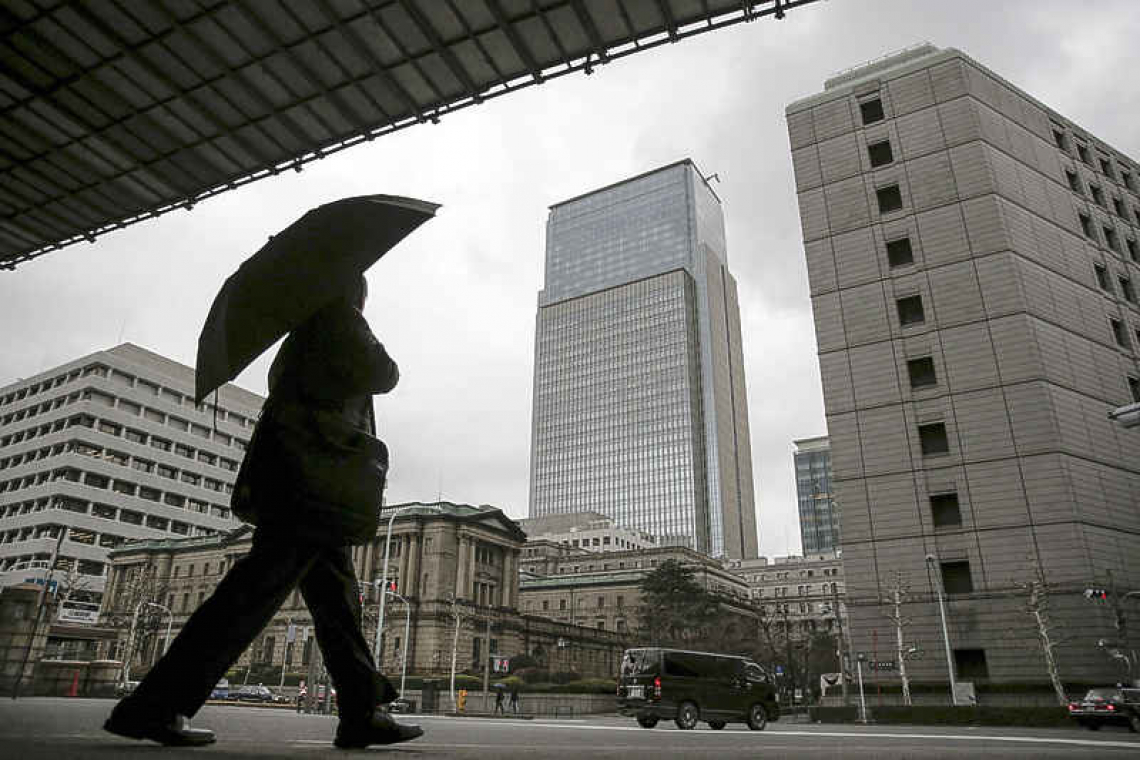SINGAPORE--The yen has tumbled 10% to a two-decade low to the dollar in a matter of weeks. But history suggests that still isn't cheap, and investors are betting that it's going to fall even further.
The drop, precipitous for a major currency in the $6.6-trillion-a-day global foreign exchange market, has been triggered by the fragility of the world's third-largest economy and the Bank of Japan's reluctance to follow the United States and the rest of the world in tightening monetary policy. That has created an unfavourable gap in government bond yields which has widened at the same time as the soaring cost of energy imports has slammed Japan's trade balance into deficit.
Yet even as yen selling extended for a record 13-day streak, analysts say the downtrend has room to run. The trade outlook and lessons from previous bouts of yen weakness point to a further decline, especially while tourism flows are absent.
"This is a regime change and when the regime changes there is no support," Junichi Inoue, who manages a portfolio of Japanese stocks at Janus Henderson, said by phone from Tokyo.
"I think there is no valuation on the currency," he said, leaving it adrift after breaching resistance around 125-per-dollar. "Once the direction is set towards weakening there are no hedging activities - until something happens. So I think 130 yen isn't going to stop (the currency's decline)," referring to a level where some traders think Japanese authorities may intervene.
Selling carried the yen close to that on Wednesday, when it touched 129.43 per dollar, its weakest since April 2002. Back then, investors thought Japan was beginning to emerge from its "lost decade" of the 90s and the yen was beginning a long rise. Today, traders are drawing parallels with the yen's weakness at the advent of deflation-fighting "Abenomics" in 2013 to make a case that there is no such turning point ahead.
In 2013, when a weaker yen was part of then-Prime Minister Shinzo Abe's drive to raise inflation, the gap between the benchmark U.S. and Japanese 10-year yields widened about 120 basis points and the yen fell by nearly 27%. This year, the rates move is comparable, but the yen has lost less in percentage terms, dropping about 20%. Thus far traders have also discounted officials' verbal efforts to steady the yen, while the BOJ has been spending billions to anchor bond yields.
At the same time, capital has flowed out of Japan to seek better returns elsewhere, and for eight months in a row the trade balance has been negative. "The most convincing turns on the currency are apt to occur when trade and financial accounts combine," said Alan Ruskin, macro strategist at Deutsche Bank.
He said average growth rates for Japan's exports are lagging near the bottom of 45 countries the bank's analysts cover. "We still seem some way from a yen positive scenario," he added.
In theory, a weaker yen improves exporters' competitiveness, driving growth and prompting a policy response that lifts the yen back up. The yen's value, weighted for trade and inflation among its biggest trading partners, is at a multi-decade low.
Shifting production patterns -- for example, cars made abroad now account for some two-thirds of Japanese automakers' sales -- make that less likely to support growth and can be more than offset by the dampening effects of rising import costs. For some analysts, this raises the risk of government intervention to steady the currency, especially as higher energy costs are starting to hurt households.







